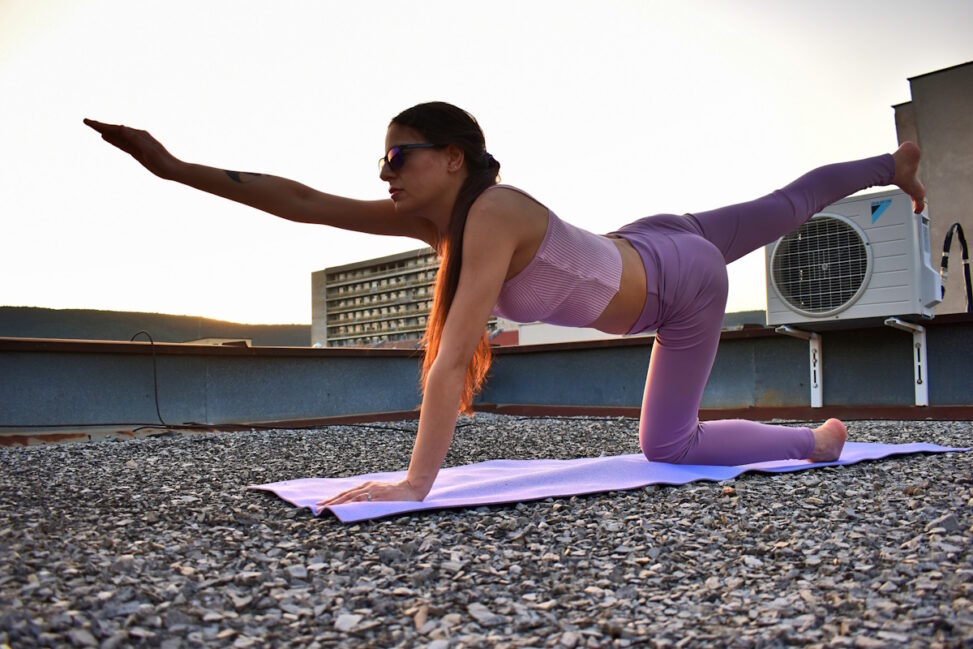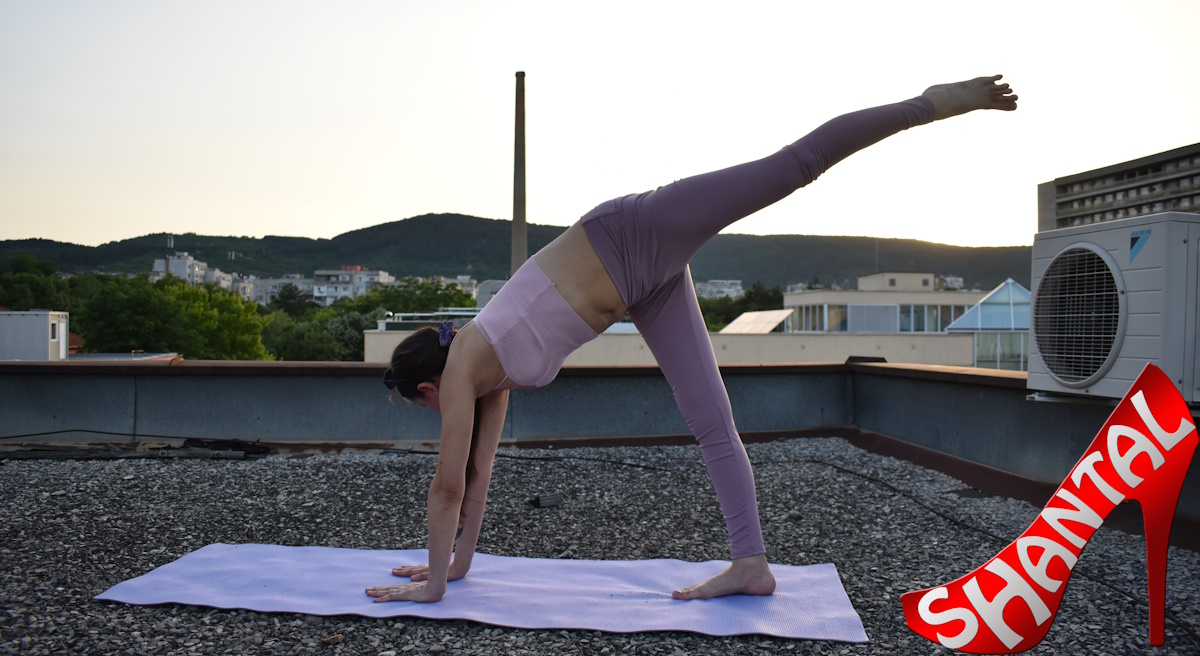Are you curious about yoga but unsure where to begin? Yoga is a transformative practice that can enhance your physical, mental, and spiritual well-being. This comprehensive guide will help you start your yoga journey, whether you prefer solo practice or professional support.
We’ll explore different types of yoga, frequency, and the best times to practice. Discover well-known figures in the yoga world and learn how to integrate this ancient discipline into your daily routine. Dive in and find the path to a healthier, more balanced life through yoga.
How Do You Start With Yoga?
Starting yoga can feel overwhelming with all the different styles, poses, and philosophies. The key is to begin with a clear intention and a willingness to learn. Here are some steps to help you get started:
- Set Your Intention: Understand why you want to start yoga. Is it for physical fitness, mental clarity, stress relief, or spiritual growth? Knowing your purpose will guide your practice.
- Find a Beginner’s Class: Look for beginner-friendly classes online or in-person. These classes often provide a gentle introduction to basic poses and breathing techniques.
- Get the Right Gear: Comfortable clothing and a good yoga mat are essential. You don’t need fancy equipment; just ensure you can move freely and safely.
- Start Slow: Begin with short sessions and gradually increase the duration as your body adapts. Focus on proper alignment and breathing rather than pushing yourself into advanced poses.
- Learn Basic Poses: Familiarize yourself with foundational poses like Mountain Pose (Tadasana), Downward Dog (Adho Mukha Svanasana), and Child’s Pose (Balasana). These poses build the foundation for more advanced practice.
Detailed Steps to Start Yoga
- Research and Choose a Style: Different styles of yoga cater to different needs and preferences. Research the various styles to find one that resonates with you.
- Create a Comfortable Space: Designate a quiet, comfortable space in your home for practice. Ensure it’s free from distractions and has enough room for you to move around.
- Use Online Resources: Platforms like YouTube offer free yoga tutorials for beginners. Channels like Yoga with Adriene and Fightmaster Yoga provide excellent guidance.
- Listen to Your Body: Yoga is about connecting with your body. Pay attention to how you feel during and after each session, and adjust your practice accordingly.
Can You Do It Alone or Do You Need Professional Support?
You might wonder if you can start yoga on your own or if you need professional support. Both options have their benefits and considerations.
Practicing Alone
Practicing yoga alone can be convenient and flexible. You can choose the time, place, and pace that suits you best. There are countless online resources, including videos, apps, and articles, to guide you. However, practicing alone requires self-discipline and awareness to ensure you’re performing the poses correctly to avoid injury.
Seeking Professional Support
Joining a yoga class or hiring a personal instructor can provide valuable guidance, especially for beginners. An experienced teacher can correct your alignment, suggest modifications, and create a supportive environment. Group classes also offer a sense of community and motivation. If you’re new to yoga or have specific health concerns, professional support can be beneficial.
Blended Approach
Consider starting with professional support to learn the basics and then transitioning to solo practice as you become more confident. Many practitioners find a combination of both approaches works best.
Are There Different Types of Yoga?
Yes, there are various styles of yoga, each with its unique focus and benefits. Here are some of the most popular types:
Hatha Yoga
Hatha yoga is a gentle introduction to the most basic yoga postures. It’s slower-paced and great for beginners. The focus is on breathing and holding poses for a few breaths.
Vinyasa Yoga
Vinyasa yoga is more dynamic and involves a series of poses that flow smoothly into one another, coordinated with your breath. It’s often referred to as “flow” yoga and can be more physically demanding.
Ashtanga Yoga
Ashtanga yoga is a rigorous style of yoga that follows a specific sequence of postures and is typically faster-paced. It requires strength, flexibility, and stamina.
Bikram Yoga
Bikram yoga, also known as hot yoga, is practiced in a heated room and involves a set series of 26 challenging poses. The heat helps to improve flexibility and detoxify the body.
Iyengar Yoga
Iyengar yoga emphasizes precision and alignment in each pose. It often uses props like blocks, straps, and bolsters to help practitioners achieve the correct form.
Restorative Yoga
Restorative yoga is a restful practice that focuses on relaxation and stress relief. It involves holding poses for extended periods with the support of props.
Kundalini Yoga
Kundalini yoga combines postures, breathing exercises, and meditation to awaken the energy at the base of the spine. It’s a spiritual and dynamic form of yoga.
Yin Yoga
Yin yoga involves holding poses for longer periods, targeting the deep connective tissues of the body. It’s a meditative practice that improves flexibility and circulation.
What Are the Well-Known Figures?
Several renowned figures have significantly contributed to popularizing yoga globally. Here are a few:
B.K.S. Iyengar
B.K.S. Iyengar is the founder of Iyengar Yoga and is known for his deep understanding of the body’s alignment in each pose. His book “Light on Yoga” is considered a classic.
Pattabhi Jois
Pattabhi Jois developed Ashtanga Yoga, a vigorous and physically demanding style of yoga. He emphasized the importance of daily practice and discipline.
T.K.V. Desikachar
T.K.V. Desikachar, the son of T. Krishnamacharya, focused on adapting yoga to individual needs. His approach, Viniyoga, emphasizes a personalized practice.
Swami Sivananda
Swami Sivananda was a spiritual teacher who integrated the physical, mental, and spiritual aspects of yoga. He founded the Divine Life Society and wrote numerous books on yoga and spirituality.
Indra Devi
Indra Devi, often called the “First Lady of Yoga,” was instrumental in bringing yoga to the West. She opened one of the first yoga studios in Hollywood and taught many celebrities.
Paramahansa Yogananda
Author of the famous book “Autobiography of a Yogi,” Paramahansa Yogananda introduced millions to the teachings of meditation and Kriya Yoga.
How Often Should You Do Yoga?
The frequency of your yoga practice depends on your goals, lifestyle, and experience level. Here are some guidelines:
- Beginners: Start with 2-3 sessions per week, each lasting 20-30 minutes. This frequency helps build a foundation without overwhelming your body.
- Intermediate Practitioners: Aim for 3-5 sessions per week, gradually increasing the duration to 45-60 minutes. This frequency allows for more significant progress in strength, flexibility, and endurance.
- Advanced Practitioners: Daily practice is ideal for those deeply committed to yoga. Sessions can vary in length and intensity, incorporating different styles and focuses.
Benefits of Regular Practice
Regular yoga practice offers numerous benefits that enhance both your physical and mental well-being. Here are some key benefits:
- Improved Flexibility: Regular yoga helps to stretch and lengthen your muscles, increasing your range of motion and reducing stiffness.
- Increased Strength: Many yoga poses build strength in various muscle groups, leading to improved overall muscle tone.
- Better Balance: Yoga improves your balance and stability, which can prevent falls and enhance coordination.
- Enhanced Mental Clarity: Yoga encourages mindfulness and focus, helping to clear your mind and improve concentration.
- Stress Reduction: Yoga promotes relaxation and reduces stress through deep breathing and meditation techniques.
- Better Sleep: Regular practice can help improve your sleep patterns, making it easier to fall asleep and stay asleep.
- Emotional Well-being: Yoga fosters a sense of inner peace and emotional stability, helping you manage anxiety and depression.
- Increased Energy: Practicing yoga regularly can boost your energy levels and reduce feelings of fatigue.
Is It Better in the Morning or the Evening?
Yoga can be practiced at any time of the day, but the benefits may vary depending on the time you choose:
Morning Yoga
Practicing yoga in the morning can energize you for the day ahead. It helps to wake up your body, improve circulation, and set a positive tone for the day. Morning yoga can also boost metabolism and enhance mental clarity.
Evening Yoga
Evening yoga is an excellent way to unwind and release the stresses of the day. It promotes relaxation, improves sleep quality, and helps to calm the mind. Gentle, restorative poses are particularly beneficial in the evening.
Personal Preference
Ultimately, the best time to practice yoga is when it fits into your schedule and feels right for your body. Some people prefer the tranquility of early morning, while others enjoy winding down with an evening session.
Is It Better Alone or in a Group?
Whether you practice yoga alone or in a group depends on your preferences and goals.
Practicing Alone
Practicing yoga alone offers flexibility and the freedom to focus entirely on your practice. It allows for a personal and introspective experience. However, it requires self-discipline and awareness to ensure you’re performing the poses correctly.
Group Practice
Group classes provide a sense of community and motivation. They offer an opportunity to learn from experienced instructors and fellow practitioners. Group practice can be particularly inspiring and supportive, especially for beginners.
Combination of Both
Many practitioners find a combination of solo and group practice to be the most beneficial. Group classes can provide structure and social interaction, while solo practice allows for personal reflection and deeper exploration.
Wrap Up
Starting your yoga journey is a personal and transformative experience. By setting clear intentions, choosing the right resources, and practicing regularly, you can enjoy the numerous physical, mental, and spiritual benefits of yoga.
Whether you practice alone or with professional support, in the morning or evening, yoga offers a path to greater well-being and self-discovery. Remember, the most important aspect is to listen to your body, be patient with yourself, and enjoy the journey.
Nina Roof Yoga
Rooftop yoga can be an interesting experience, but there are a few things to keep in mind. Yoga itself is a millennia-old exercise system from India that is intended to connect the body, mind and soul. It includes postures (asanas), breathing exercises, meditation and self-awareness. The positive effects of yoga are manifold: it can reduce stress, increase flexibility, strengthen muscles and promote relaxation.
Practicing on the roof, however, requires caution:
– Safety: Make sure the roof is stable and safe to avoid accidents.
– Weather: Choose sunny, windless days to feel comfortable.
– Surface: Use a non-slip mat or blanket to find support on the roof.
– Height: If you suffer from a fear of heights, rooftop yoga can be challenging.
Overall, rooftop yoga can be a refreshing experience, but be mindful and choose the right place and time!
+ + + Nina Yoga at the evening and at the roof + + +







